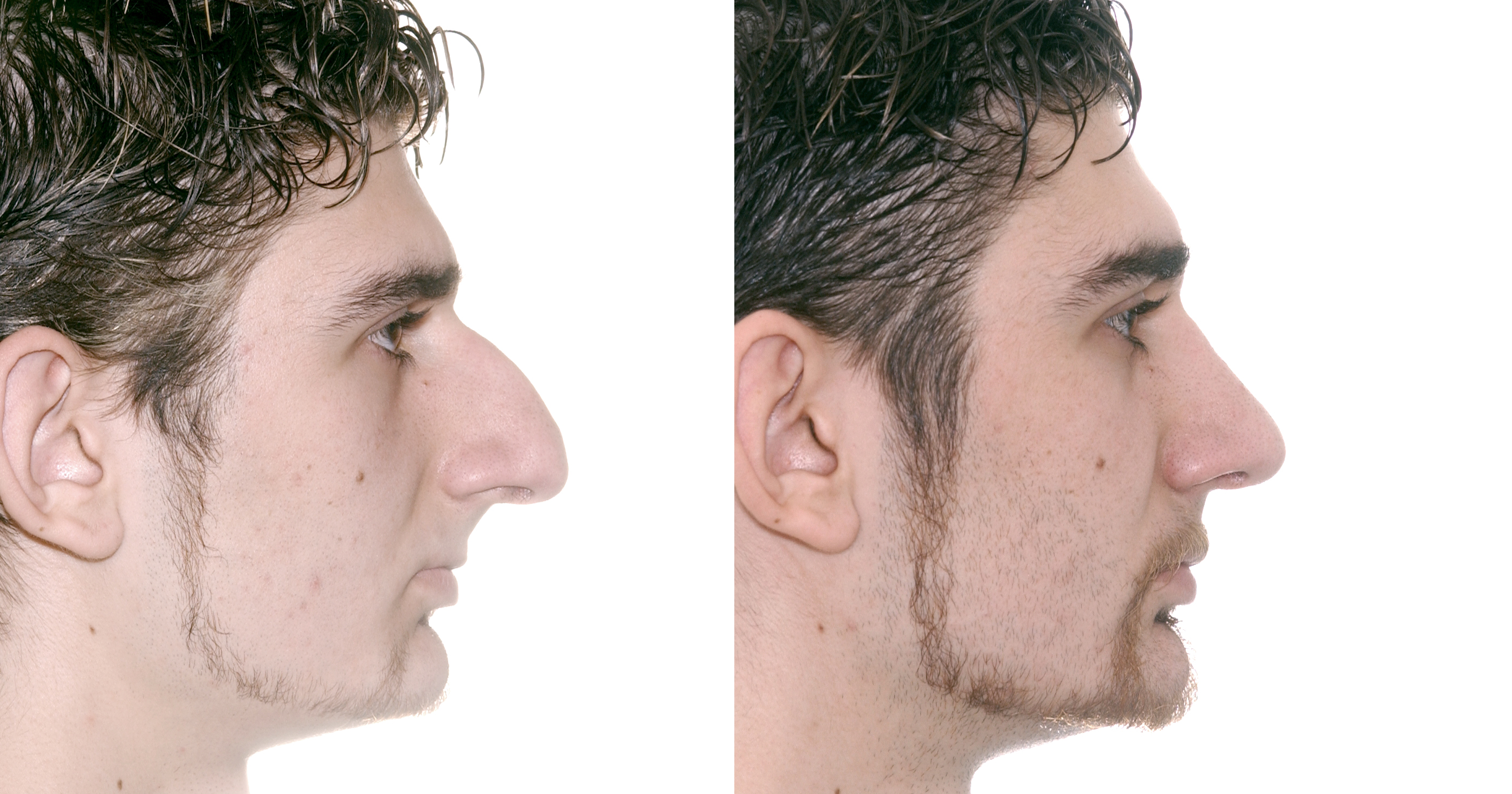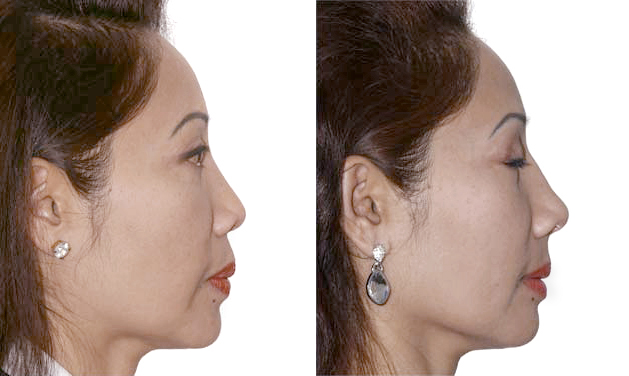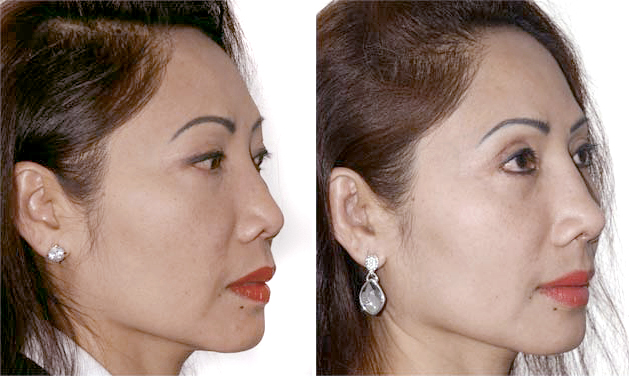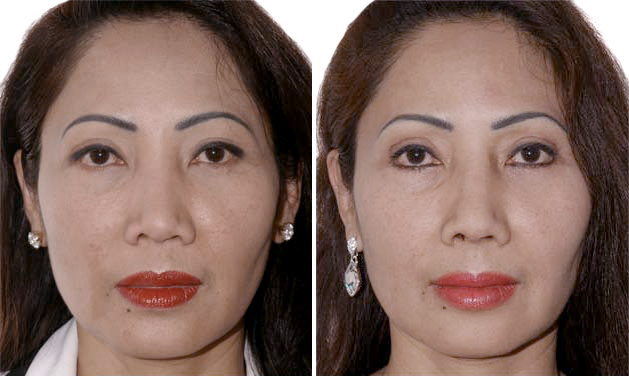Nose Size
Large Nose 1
Despite his large nose, this patient had difficulties in breathing. This was due to a severely deviated nasal septum. By correcting the internal structures of the nose, I succeeded in improving the patient's nasal breathing despite reducing the overall size of his nose.

During the nose operation, I not only lowered the nasal pyramid but also designed the connection between nasal columella upper lip more harmoniously.

The visible irregularities in the area of the nasal pyramid stem from a nasal injury long before the patient underwent this operation.

In addition, I reduced the nasal tension which occurred when the patient laughed. As a result, the nasal tip remains more harmonious during intense facial movements.


This picture shows a good example of the straightening and rounding of the nasal pyramid.

Large Nose 2
This patient was disturbed by the size and hooked shape of his nose.
Despite the reduction of the nasal shape, the assertiveness of his facial expression is preserved.

Large Nose 3
Despite his large nose and broad nostrils, this man could not breathe well through his nose as a result of a deviated nasal septum. In addition to improving his nasal breathing, the patient also wanted to have a nasal size reduction. During a joint discussion, I simulated a possible nose reduction on the computer (middle picture). The results can be seen in the right-hand picture, which was taken a year after the operation. It also shows the extent to which the computer simulation and the sought-after results may differ from one another. In the majority of cases, however, I am able to achieve an even more accurate result.

The patient felt that his nasal pyramid curved to the left, which I also straightened during the operation. The middle picture is the computer simulation.
The right-hand picture shows the results again, this time a year after the operation.

The detailed images of the nostrils show how invisible the incisions through the nasal columella and along the nasal wing to reduce the size of the nostrils are. Both detailed views show the nostrils one year after the nose operation.

The change in the overall character of the nose is very evident in this comparison. The man almost looks rejuvenated as a result of the straightened nasal pyramid, corrected drooping nasal tip and the nostrils, which were reduced in size.

I raised the drooping nasal tip and corrected the crookedness in the nasal pyramid at the same time.

By reducing the size of the nose and nostrils and correcting the position of the nasal tip, the patient's entire face immediately looks more harmonious.

Before the operation, the tip of his nose dropped noticeably when he laughed. I also considered these future movements during the planning phase and integrated them into the operation.

In the profile view, the more harmonious outer line and the more even, independent proportions are clearly visible.

I was able to straighten the crooked nasal pyramid during the operation without difficulty.

Despite the new shape of the nostrils looking smaller, I definitely achieved a clear improvement in nasal breathing. This was primarily due to straightening the nasal septum inside the nose, which also fixed the asymmetry of the patient's nostrils.

Small nose
For years, this lady had problems with her small nose. To solve this, I filled out the tip of the nose with tissue from her own body, thus raising it over the line of the nasal pyramid. Furthermore, I shifted the connection of upper lip to nasal columella forwards and rounded it off.

In this view, the raising and emphasis of the nasal tip can be seen. Although the nostrils seem rather large, the client didn't want to undergo a reduction operation on the nasal wings of her nose.

By raising the nasal tip, the nose also looks more delicate.

